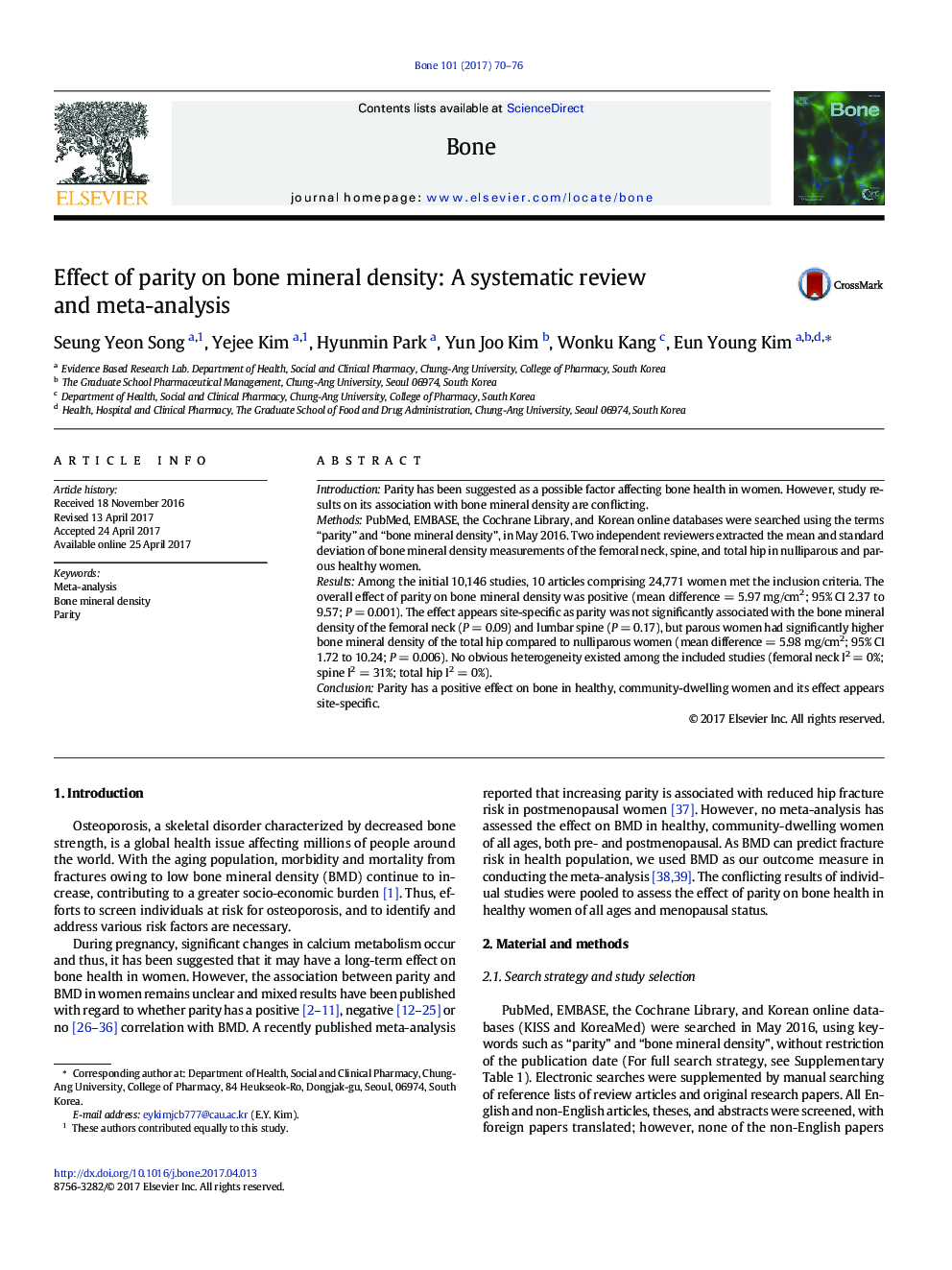| کد مقاله | کد نشریه | سال انتشار | مقاله انگلیسی | نسخه تمام متن |
|---|---|---|---|---|
| 5585209 | 1568118 | 2017 | 7 صفحه PDF | دانلود رایگان |
- Study results on the effect of parity on bone health in women have been conflicting.
- The effect of parity on bone mineral density was assessed using a meta-analysis.
- Parity has a positive effect on bone in healthy, community-dwelling women.
- Effect of parity appears site specific with a significant association observed with bone mineral density at the total hip.
IntroductionParity has been suggested as a possible factor affecting bone health in women. However, study results on its association with bone mineral density are conflicting.MethodsPubMed, EMBASE, the Cochrane Library, and Korean online databases were searched using the terms “parity” and “bone mineral density”, in May 2016. Two independent reviewers extracted the mean and standard deviation of bone mineral density measurements of the femoral neck, spine, and total hip in nulliparous and parous healthy women.ResultsAmong the initial 10,146 studies, 10 articles comprising 24,771 women met the inclusion criteria. The overall effect of parity on bone mineral density was positive (mean difference = 5.97 mg/cm2; 95% CI 2.37 to 9.57; P = 0.001). The effect appears site-specific as parity was not significantly associated with the bone mineral density of the femoral neck (P = 0.09) and lumbar spine (P = 0.17), but parous women had significantly higher bone mineral density of the total hip compared to nulliparous women (mean difference = 5.98 mg/cm2; 95% CI 1.72 to 10.24; P = 0.006). No obvious heterogeneity existed among the included studies (femoral neck I2 = 0%; spine I2 = 31%; total hip I2 = 0%).ConclusionParity has a positive effect on bone in healthy, community-dwelling women and its effect appears site-specific.
Journal: Bone - Volume 101, August 2017, Pages 70-76
